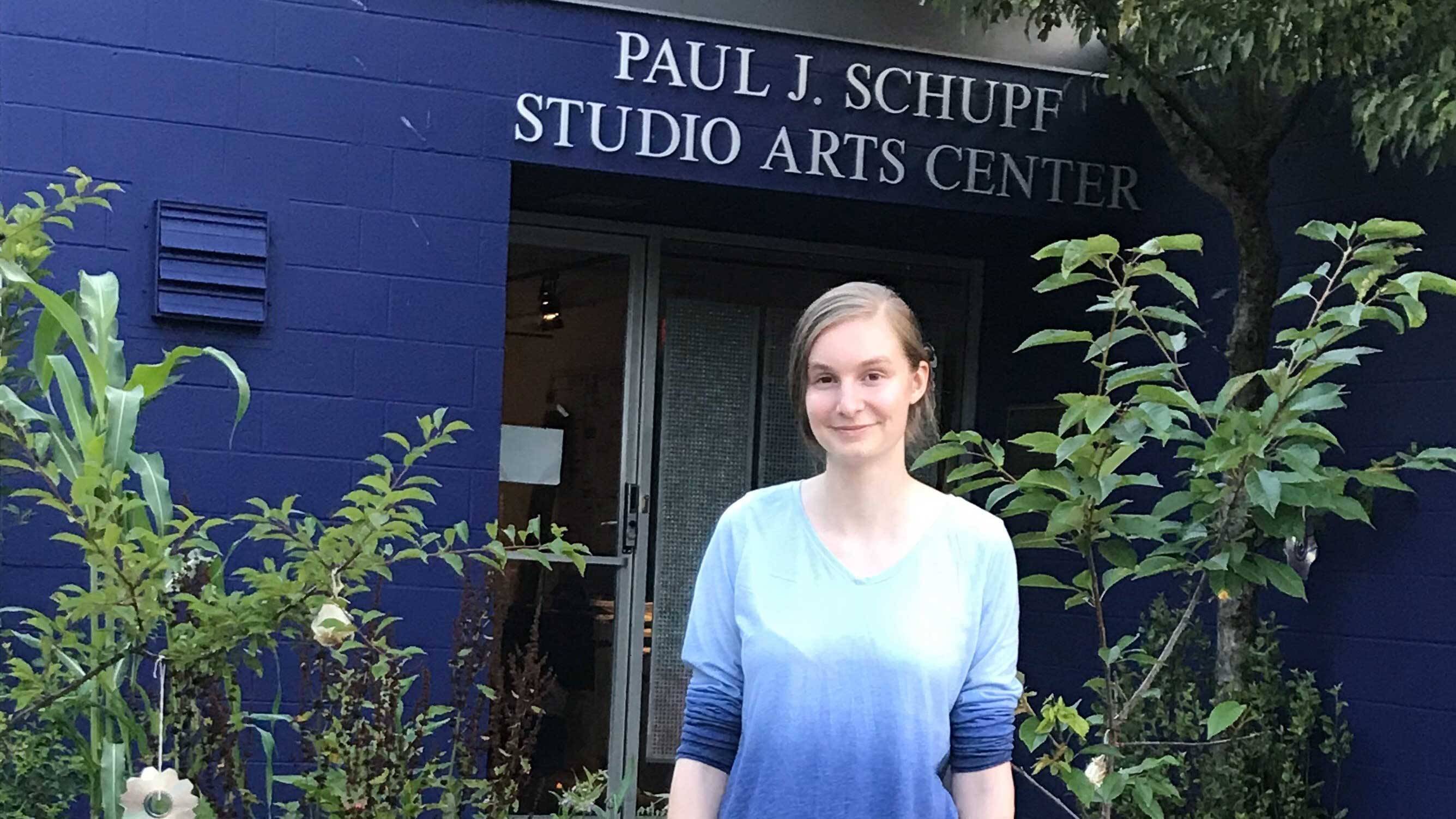During the summer, Colgate students are applying their liberal arts know-how in a variety of real-world settings, and they are keeping our community posted on their progress. Psychology major Keara Greene ’20, from Halifax, Mass., describes her summer research.
This summer, I am working with Professor Margaretha Haughwout on summer research that combines my double minor in environmental studies and art and art history. This position has given me new insights into just how entwined these disciplines can be — something I never knew before. Working with ecologies can be a highly creative endeavor, as it explores how to generate new sets of relationships between humans and nonhumans.
Because the position is interdisciplinary, it has a multifaceted nature — meaning I work on many different projects. I first take care of a “food forest studio” outside of Schupf Studio Arts Center, tending to the plants while also developing it as a creative piece. I learn about the plants’ cultivation, as well as their medicinal and edible uses, compiling and cataloguing the information together.
This living studio includes dwarf fruit trees, which directly links to one of Professor Haughwout’s projects on grafting. Eventually, the studio will be an interactive space where individuals can make use of the edible plants and fruits, but also learn more about each plant and graft in the garden through the use of labels and QR codes linking to more information.
I also help bring life to the tunnels underneath Colgate by designing and installing compositions that focus on the changing ecologies of the local area in N.Y. State and in the Susquehanna River watershed. These ecologies are changing as a result of climate change and the Anthropocene. Again, I learn to combine studio art with ecological information to create something interactive — this time, employing more traditional composition skills.
Helping Professor Haughwout with her projects allows me to gain real world experience and a glimpse at how environmental studies can be combined with art. I now better understand what type of projects eco-artists are doing and how these projects are developed. In addition to developing an expanded aesthetic sensibility, all of these projects help develop my technical skills. I utilize various technologies to make these projects come to life — including Adobe Illustrator and a laser cutter. This allows me to create stencils for spray painting in the tunnels and to generate labels for the plants in the garden. I also work with WordPress and other business technologies to advance and organize Professor Haughwout’s projects.
Because I work so closely with Professor Haughwout, I am able to learn from her wealth of knowledge on the environment, art, and how to combine disciplines into something meaningful that has far-reaching impacts on communities. The level of independence and involvement she allows me on these projects not only helps me actively learn the information, but also prompts me to take initiative and develop my own skills for these projects.
